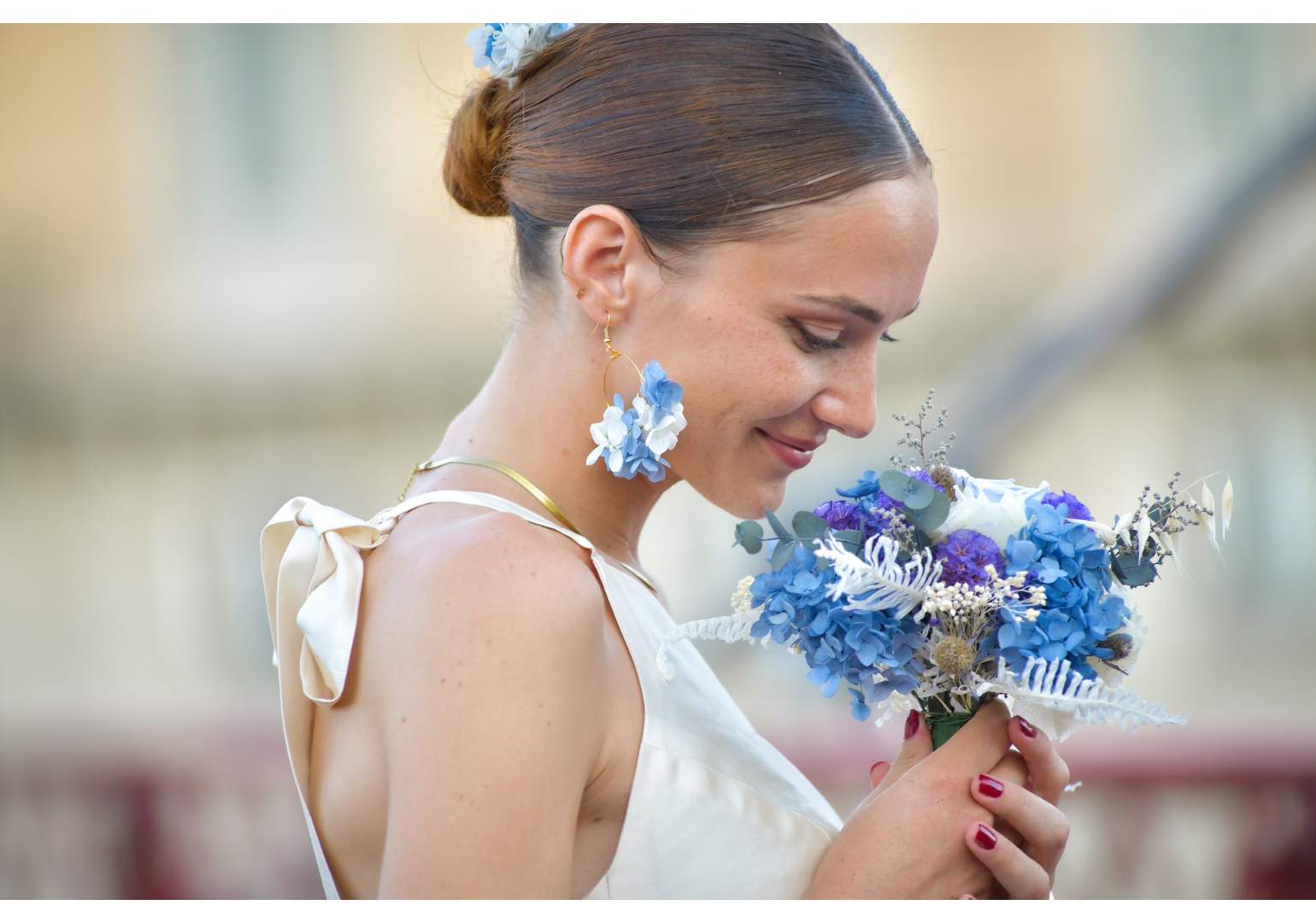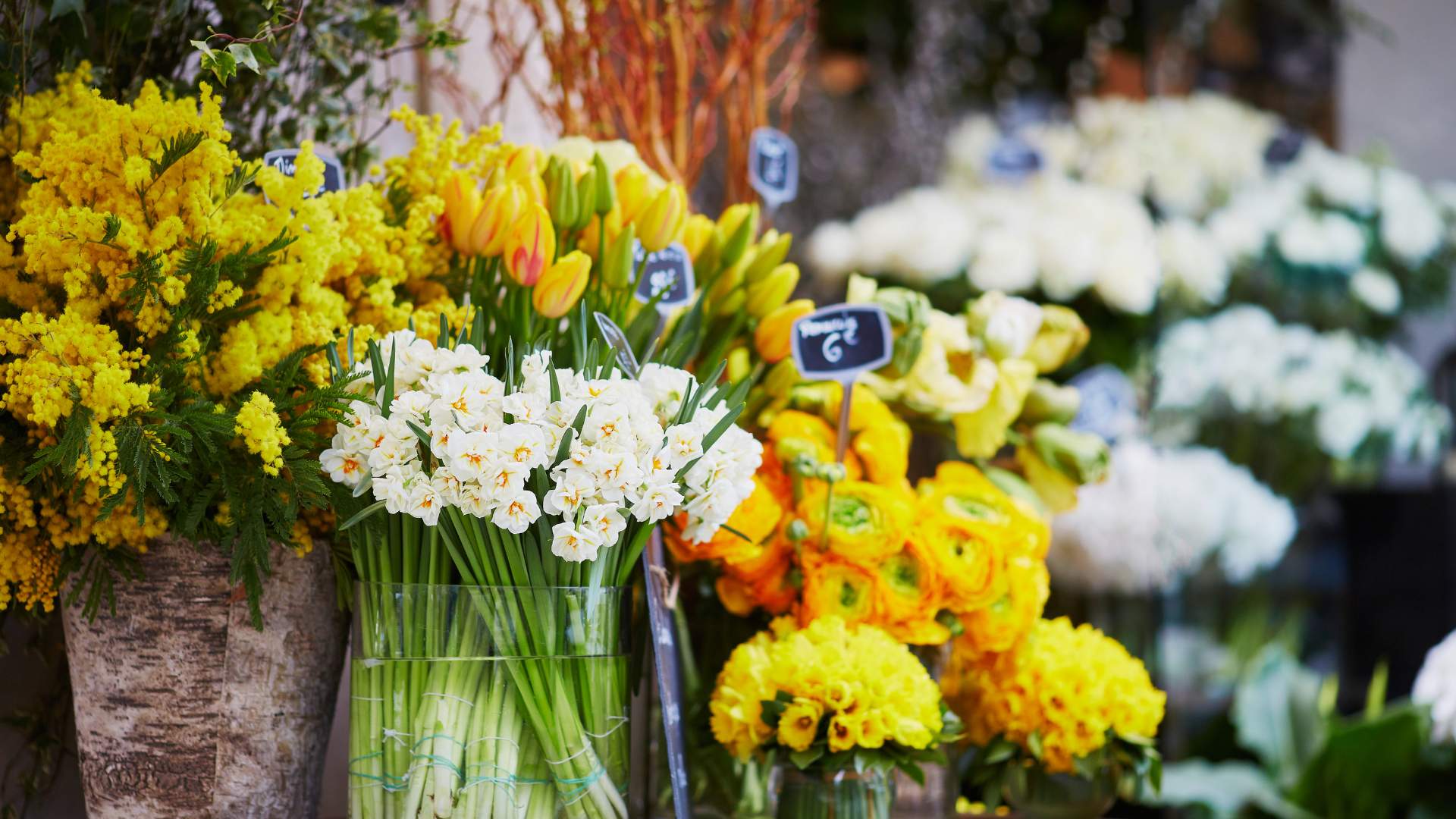Spring flowers:
The chromatic awakening of nature
Spring, the season of rebirth, is a veritable explosion of color. Gardens come alive, trees adorn themselves with their most beautiful leaves, and flowers bloom, offering an enchanting spectacle. Among this profusion of colors and fragrances, spring flowers occupy a special place. They are often chosen to compose magnificent bouquets, symbols of freshness and joy.
Choosing a bouquet of spring flowers is a true creative adventure. The colors, shapes, textures, and scents of each flower offer endless possibilities for creating unique and personalized arrangements.
Spring's must-have flowers: detailed portraits
- The Tulip: The undisputed queen of spring, the tulip comes in a multitude of varieties. From elegantly shaped single tulips to lushly petaled double tulips, there's something for everyone. Colors range from pure white to intense black, including all shades of pink, red, yellow, and purple.
- Daffodil: With its vibrant yellow trumpets, the daffodil is a symbol of joy and renewal. Its delicate, intoxicating fragrance brings a touch of cheerfulness to any bouquet.
- Hyacinth: Hyacinth is prized for its clusters of colorful, bell-shaped flowers. Its intense, sweet fragrance makes it a popular flower for perfumery.
- Narcissus: A cousin of the daffodil, the narcissus is distinguished by its central crown, often a different color from the petals. It symbolizes new life and renewal.
- Muscari: More discreet than other spring flowers, muscari forms small clusters of bell-shaped flowers, often purplish-blue in color. It adds a touch of delicacy to bouquets.
- Anemone: The anemone is a wildflower with silky, delicate petals. It comes in a wide range of colors, from pure white to intense red.
- Primrose: With its small, cup-shaped flowers, the primrose is a delicate and colorful flower. It symbolizes youth and freshness.
- Crocus: Crocuses are among the first flowers to appear in spring. Their cup-shaped flowers are often brightly colored, such as yellow or purple.
Color combinations: creating harmonies
Choosing the right colors is essential for creating a harmonious and balanced bouquet. Here are some tips:
- The Color Wheel: Use the color wheel to help you choose colors that work well together. Complementary colors (opposite each other on the wheel) create vibrant contrasts, while analogous colors (side by side) offer softer harmonies.
- Shades: Don't hesitate to play with shades of the same color to create depth and visual interest.
- Warm and cool tones: Warm colors (red, orange, yellow) evoke warmth and energy, while cool colors (blue, purple, green) bring a feeling of calm and serenity.
Shapes and Textures: A Play of Contrasts
In addition to colors, the shapes and textures of flowers play an important role in the composition of a bouquet.
- Shapes: Vary flower shapes to create a dynamic and interesting bouquet. Pair round flowers, such as roses, with elongated flowers, such as tulips.
- Textures: Petal textures can also add an extra dimension to your bouquet. Pair flowers with smooth petals with flowers with ruffled or velvety petals.
Occasions: The Perfect Bouquet for Every Moment
- Mother's Day: A bouquet of pastel roses, white tulips, or peonies is a classic and elegant choice.
- Easter: Pastel colors (pink, yellow, light blue) are ideal for an Easter bouquet. Combine tulips, hyacinths, and lilies of the valley with weeping willow branches.
- Birthday: The choice of flowers will depend on the personality of the person receiving the bouquet. For a joyful birthday, choose bright colors and cheerful flowers. For a more sober birthday, opt for pastel colors and delicate flowers.
- Valentine's Day: Red roses remain the queens of Valentine's Day bouquets, but you can also opt for red tulips, carnations or orchids.
Care Tips to Make Your Bouquet Last Longer
- Cutting the stems: Cut about 2 cm of the stems at an angle before placing the flowers in a vase filled with fresh water.
- Change the water regularly: Change the water in the vase every two days and clean the vase with bleach.
- Remove submerged leaves: Submerged leaves promote the growth of bacteria.
- Choose a cool location: Avoid placing your bouquet near a heat source or drafts.
- Add a flower preservative: Commercially available flower preservatives can help extend the life of your bouquet.
Let your creativity flow
Creating a bouquet of spring flowers is a creative activity that allows you to express yourself and delight yourself or your loved ones. Feel free to experiment with different combinations of flowers, colors, and shapes to create unique and personalized bouquets.








